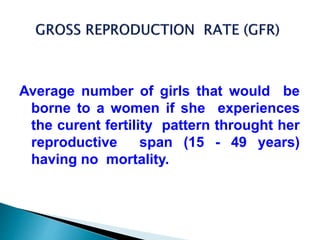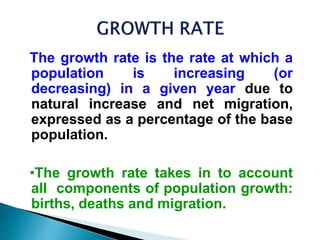This document provides information about key concepts and indicators used in demography and epidemiology. It defines demography as the study of populations and their size, structure and changes over time. Key components of demography include fertility, mortality, migration and population growth. Several population indicators and rates are described such as crude birth rate, general fertility rate, total fertility rate, crude death rate, infant mortality rate, and life expectancy. Methods for measuring disability, natality, and migration are also summarized.




























































































































